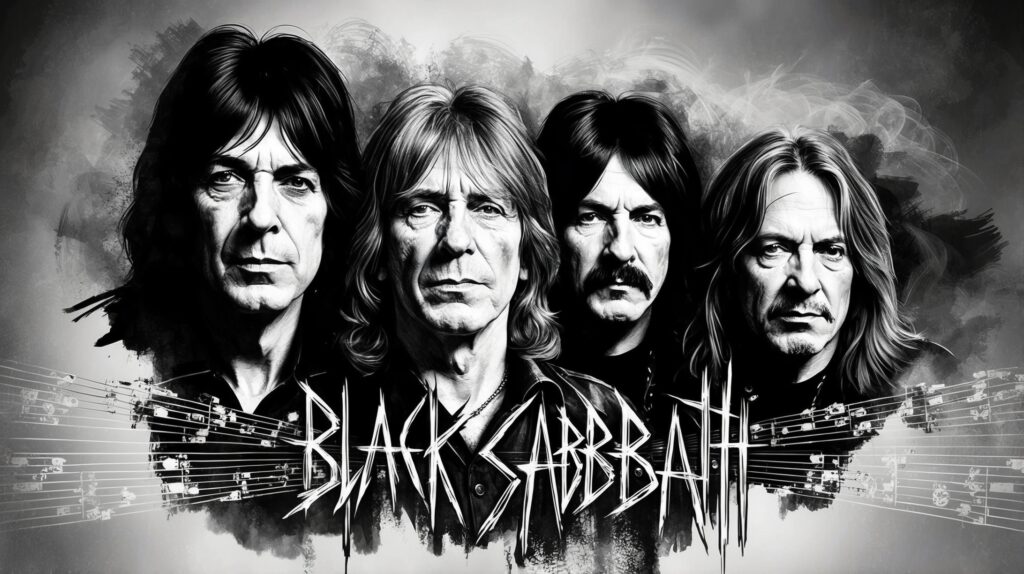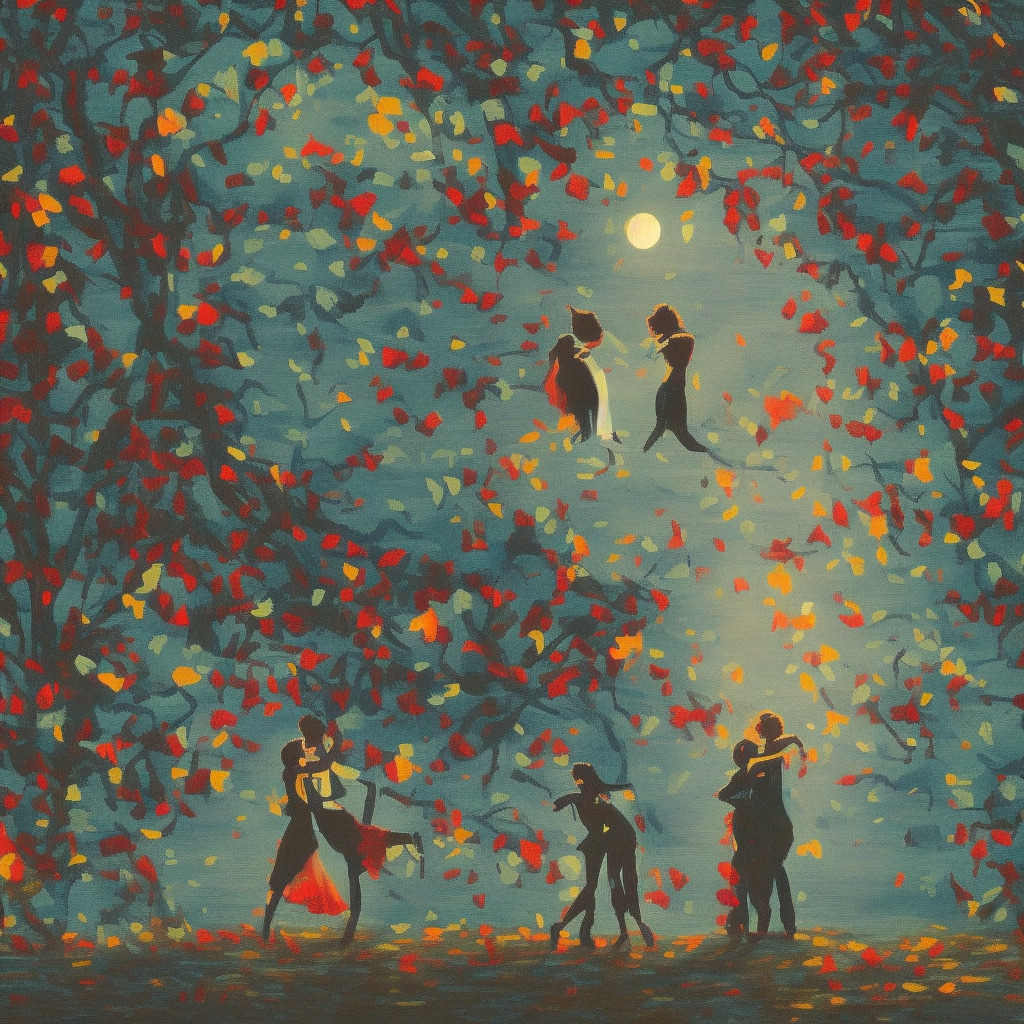Black Sabbath: Pioneers of Heavy Metal and the Enigmatic “Paranoid” Era
Explore the world of Black Sabbath, the legendary pioneers of heavy metal, and the iconic era surrounding the release of “Paranoid.” Discover the band’s formation, their groundbreaking impact on music, and the unique synergy that defined their early success.
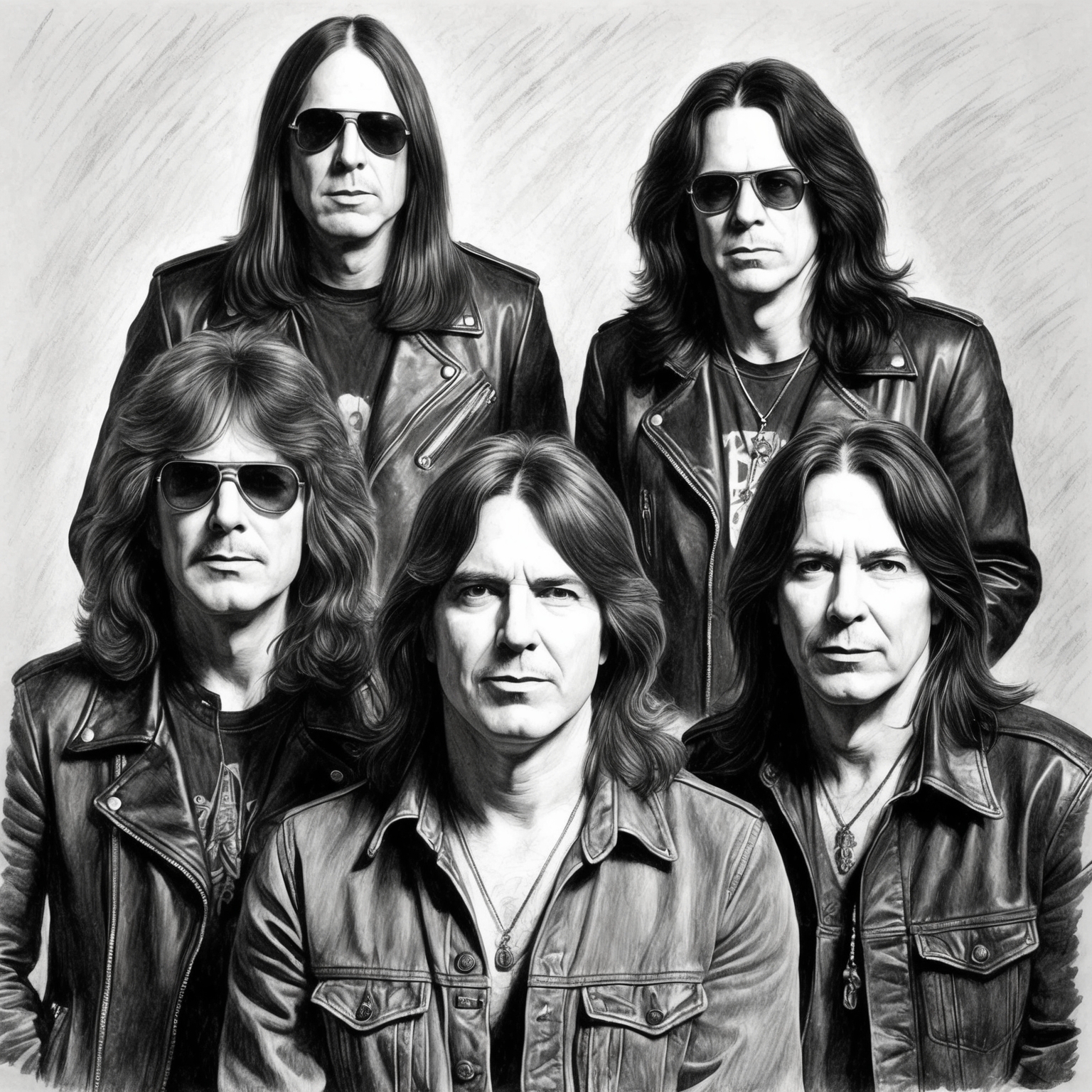
When discussing the origins and evolution of heavy metal, it is impossible to overlook the significant contributions of Black Sabbath. Formed in Birmingham, England, in 1968, the band consisted of Tony Iommi, Geezer Butler, Bill Ward, and the unmistakable voice of Ozzy Osbourne. Often regarded as the progenitors of heavy metal, Black Sabbath’s revolutionary sound characterized by dark, heavy riffs and ominous themes became a template for successive generations of rock and metal bands.
The release of “Paranoid” in 1970 marked a seminal point in the band’s career, skyrocketing them to global prominence. It was a time when the music scene was replete with psychedelic and progressive rock aspirations, yet Black Sabbath carved out their unique identity with their distinct sonic intensity. The song “Paranoid,” in particular, encapsulated the ethos of the era, featuring Tony Iommi’s iconic guitar riffs and Osbourne’s haunting, almost manic vocals. Even though it was written in a mere 20 minutes as a last-minute inclusion for the album, it became one of the band’s most recognizable tracks.
The early years of Black Sabbath were defined by their gritty determination and groundbreaking contributions to music. Their collaboration was a fusion of diverse influences and innovative ideas that each member brought to the table—a synergy that would forever alter the musical landscape. Despite the initial mixed critical reception, their raw sound eventually broke through in a big way, resonating with a generation that was seeking new sonic experiences.
The Brilliant Mind Behind the Notes
Discover the incredible impact of Tony Iommi’s composition on Black Sabbath’s “Paranoid,” highlighting his unique style, influential background, and pivotal role in the song’s creation.

Background and Career
Black Sabbath’s “Paranoid” owes much of its iconic sound to the creative genius of Tony Iommi, the band’s guitarist and primary composer. Born in Birmingham, England, Iommi first picked up a guitar as a teenager, drawn to the instrument by the fervor of the burgeoning British blues rock scene. Although he faced a career-threatening challenge after losing the tips of his fingers in an industrial accident, Iommi’s determination led him to modify his playing style, contributing to his unique sound. From these early beginnings, his career flourished, establishing him as a foundational figure in the heavy metal genre.
Musical Style and Influences
Tony Iommi’s musical style is characterized by heavy, down-tuned guitar riffs and a dark, brooding atmosphere. Influenced by blues, rock, and jazz, his compositions often explore complex arrangements and innovative techniques, underscoring his deep understanding of music theory and rhythm. Iommi has cited legends like Django Reinhardt and Hank Marvin as influences, artists who shaped his approach to both guitar playing and composition. This eclectic mix of influences helped him craft a distinctive sound that set Black Sabbath apart from their contemporaries.
Role in “Paranoid”
In the creation of “Paranoid,” Iommi played a pivotal role, delivering the song’s main riff, which is both simple yet powerfully captivating. Written in a matter of minutes to fill album space, the track’s urgent tempo and raw energy showcase Iommi’s ability to intersect musical simplicity with deep emotional resonance. The interplay between his music and Ozzy Osbourne’s vocals creates an electrifying dynamic, contributing significantly to the song’s success. “Paranoid” is a testament to Iommi’s compositional prowess and its lasting impact on the genre.
Recognizing the Legendary Impact of ‘Paranoid’
Explore the rich legacy of Black Sabbath’s ‘Paranoid’ and its cultural impact, including notable covers, movie and TV appearances, and its footprint in the gaming world.

Paranoid by Black Sabbath may be a song that hasn’t amassed a mantle crowded with awards, but its cultural and musical influence acts as an enduring testament to its legendary status. While it may not have been recognized traditionally with a plethora of awards or nominations, its resonance with audiences and musicians alike speaks volumes for its lasting appeal. The song has, however, transcended the confines of awards and accolades by establishing itself as a seminal piece in the evolution of heavy metal. The impact of ‘Paranoid’ has been reflected in numerous covers by other well-known artists across different genres. Bands like Megadeth and Queens of the Stone Age have offered their renditions, showcasing the song’s versatile appeal and its ability to inspire musicians globally, keeping the core essence intact while adding their signature styles.
The omnipresence of ‘Paranoid’ isn’t limited to covers alone. Its memorable riffs and haunting lyrics have infiltrated popular culture through its inclusion in various films, television series, and video games, bridging the gap between generations. The song has featured in movies and TV shows, like ‘Dazed and Confused’ and ‘Supernatural,’ enhancing scenes with its iconic groove and setting the tone for dynamic narratives. Moreover, ‘Paranoid’ has also captivated the world of gaming enthusiasts, making appearances in games such as ‘Guitar Hero’ and ‘Rock Band’, allowing players to experience a slice of rock history by stepping into the shoes of the legendary Ozzy Osbourne. Although ‘Paranoid’ may not be stacked with formal accolades, its presence across different media and reinterpretations by other artists stand as living accolades, cementing its place as a timeless classic.
Riding High Above the Rest: The Chart Success of ‘Paranoid’
Released in August 1970, ‘Paranoid’ swiftly climbed charts, cementing itself as Black Sabbath’s breakout hit, reflecting the band’s rising dominance in the heavy metal genre. Its raw power and energetic delivery resonated with audiences, leading to high UK chart positions and widespread acclaim.
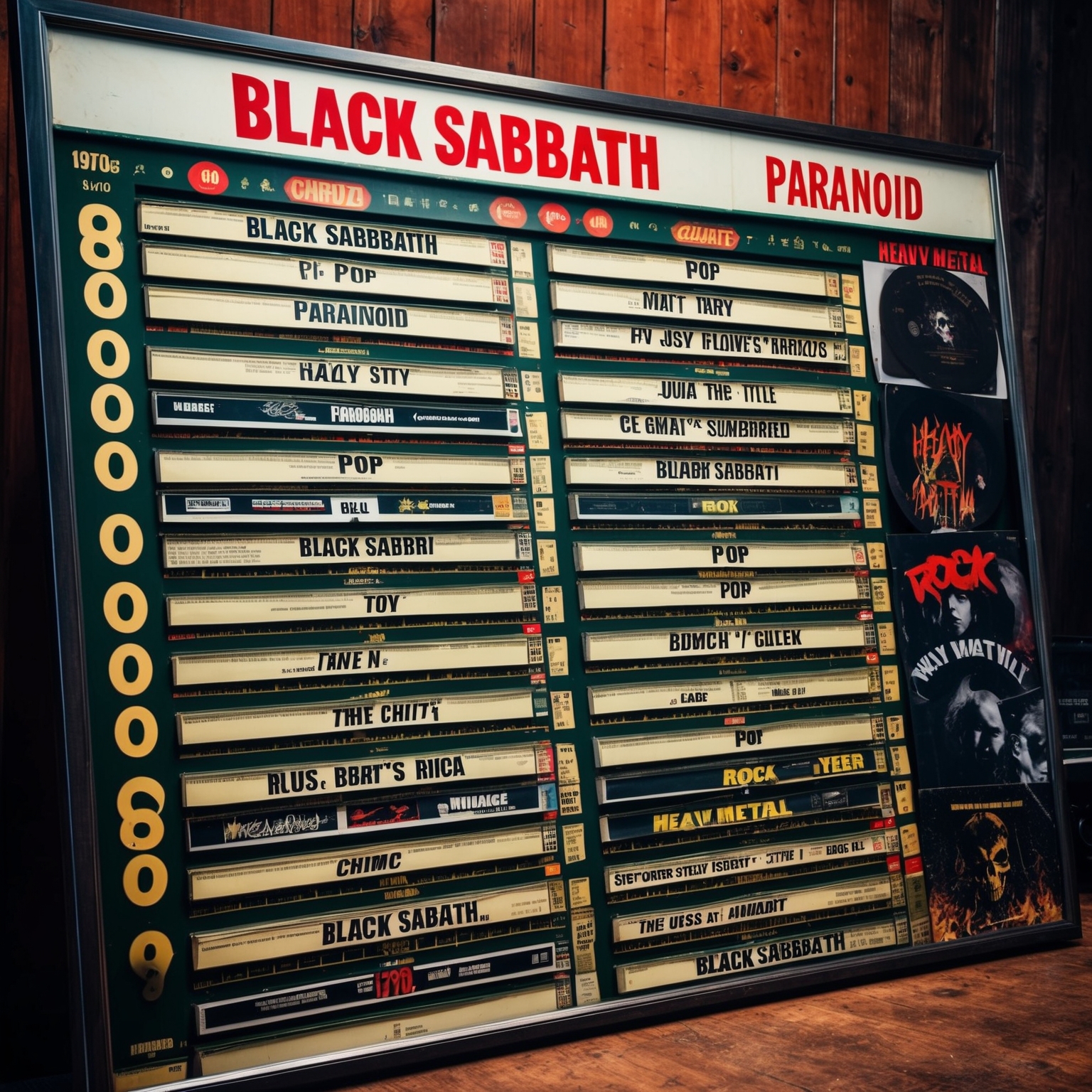
When ‘Paranoid’ was released in August 1970, it quickly became a beacon of Black Sabbath’s emerging dominance in the heavy metal scene. Initially intended as a filler track for their second studio album, it unexpectedly turned into a colossal hit. The song made its mark on the UK Singles Chart, peaking at number 4, and it remarkably highlighted the band’s relentless energy and resonated with the youth of the era. In a year dominated by diverse musical styles, ‘Paranoid’ stood out, offering a raw, unfiltered sound that captivated listeners and pushed it up the charts effortlessly.
Comparing ‘Paranoid’ to other charting tracks of 1970, it emerges as a powerful anthem that solidified Black Sabbath’s place in the pantheon of rock music. Other songs in the charts during that period included lighter pop and rock genres, but ‘Paranoid’ set a different standard with its gritty, unapologetic delivery. It wasn’t just a breakthrough hit; it was a statement of the band’s rapidly growing influence, and this track paved the way for their subsequent successes. Chart success contributed significantly to defining their future musical trajectory.
The marketing strategies for ‘Paranoid’ were straightforward yet effective. The label focused on capitalizing on the band’s raw appeal and the burgeoning interest in heavy metal. The song’s live performances were also instrumental in boosting its popularity. Public and critical reception was overwhelmingly positive; many hailed it as the embodiment of the heavy metal spirit. Over the years, its cultural impact has been profound, becoming an anthem of disenchantment felt by a generation questioning everything. Interestingly, the song’s legacy continues to thrive in the digital age with impressive streaming numbers that signify its enduring appeal.
Visual Echoes of Black Sabbath’s ‘Paranoid’
Explore the fan-made and live video representations of Black Sabbath’s ‘Paranoid,’ capturing the song’s themes and energy.

Although ‘Paranoid’ by Black Sabbath was released in 1970, before the era of MTV and the dominance of music videos, the song’s powerful energy lives on through various visual interpretations. Since there wasn’t an official music video at the time of the song’s release, fans have created numerous video tributes and visual accompaniments that capture the essence of this timeless track. These fan-made videos often leverage concert footage, showcasing Black Sabbath’s electrifying live performances, which continue to resonate with audiences today.
A notable feature of these fan-generated videos is their ability to depict the raw intensity and thematic elements of ‘Paranoid.’ Many such videos blend vintage footage and psychedelic visuals to reflect the song’s themes of isolation and mental unrest. The grainy, high-contrast clips of the band performing on stage effectively capture the era’s rebellious spirit and the dark, brooding atmosphere of the track. These visual interpretations play a crucial role in maintaining the song’s popularity, especially considering Black Sabbath’s influence on generations of rock and metal bands.
Engagement with these visual tributes shows how ‘Paranoid’ transcends time and continues to inspire. The dynamic fusion of Black Sabbath’s live energy with imaginative visuals enables new fans to discover the track while offering long-time listeners a nostalgic nod to the era when ‘Paranoid’ first echoed in the halls of rock history. Whether through official performance videos or passionate fan creations, the visual representation of ‘Paranoid’ remains a significant part of its enduring legacy.
Decoding the Musical Architecture of ‘Paranoid’
Explore the musical structure of ‘Paranoid’ by Black Sabbath, including its key, chord progressions, and instrumentation, while contextualizing its impact within the band’s evolution.

‘Paranoid’ by Black Sabbath is a stellar example of early heavy metal, characterized by its fast-paced, aggressive musical structure. The song is primarily written in the key of E minor, a tonal choice that contributes to its dark and intense mood. This key is not uncommon in rock and metal, as it allows for powerful, resonant chord progressions well-suited to Tony Iommi’s iconic guitar riffs. The song’s tempo is a brisk 164 beats per minute, which injects energy and urgency into its concise playtime of just under three minutes.
The melody of ‘Paranoid’ thrives on its simplicity, allowing the focus to remain on its gripping rhythmic patterns. The song employs an uncomplicated chord structure revolving around the central riff, which often toggles between power chords in E, G, and D major—a classic construction technique that adds tension and drive. In harmony, Ozzy Osbourne’s vocals deliver a raw, direct performance that cuts through the instrumental backdrop with precision.
Instrumentally, ‘Paranoid’ showcases the interplay of guitar, bass, and drums, creating a cohesive sound that is both raw and polished. Iommi’s guitar riffs are front and center, threaded with Geezer Butler’s pulsating bass lines and Bill Ward’s relentless drumming, coalescing into the quintessential Sabbath sound. The song’s structure is straightforward: an opening riff, verse, chorus, and an instrumental break. The lack of a traditional bridge or solo allows the main riff to wield its full, unrelenting power throughout.
Comparatively, ‘Paranoid’ represents a significant moment in Black Sabbath’s discography. It stands as a definitive track that marks their musical evolution from the self-titled debut album, showcasing a leaner, brisker approach as opposed to the sprawling, blues-infused tracks of their earlier work. The song embodies the band’s shift towards a more refined sound, foreshadowing their future explorations in albums like ‘Master of Reality’ and ‘Volume 4’. This progression underscores Sabbath’s evolving artistic direction, emphasizing their growing command over concise, impactful compositions.
Recorded quickly and on a limited budget, ‘Paranoid’ was produced by Rodger Bain at Regent Sound Studios, an environment not known for heavy metal music. Interestingly, the song was written and recorded at the eleventh hour when the band realized they needed more material for the album. Despite its hasty creation, ‘Paranoid’ not only came to define the album but also became one of the band’s most enduring tracks—testament to the spontaneous creativity and raw talent within Black Sabbath during this pivotal time.
Delving Into the Depths of ‘Paranoid’: A Lyrical Investigation
Explore the complex themes and emotive storytelling in the lyrics of Black Sabbath’s ‘Paranoid’. From mental health struggles to the use of powerful literary devices, this analysis delves into what makes the lyrics resonate across generations.
‘Cause she couldn’t help me with my mind
People think I’m insane
Because I am frowning all the time (come on out)
All day long I think of things
But nothing seems to satisfy
Think I’ll lose my mind
If I don’t find something to pacify
Can you help me?
Occupy my brain
Oh, yeah (let me see your hands)
I need someone to show me
…
******* This Lyrics is NOT for Commercial use *******
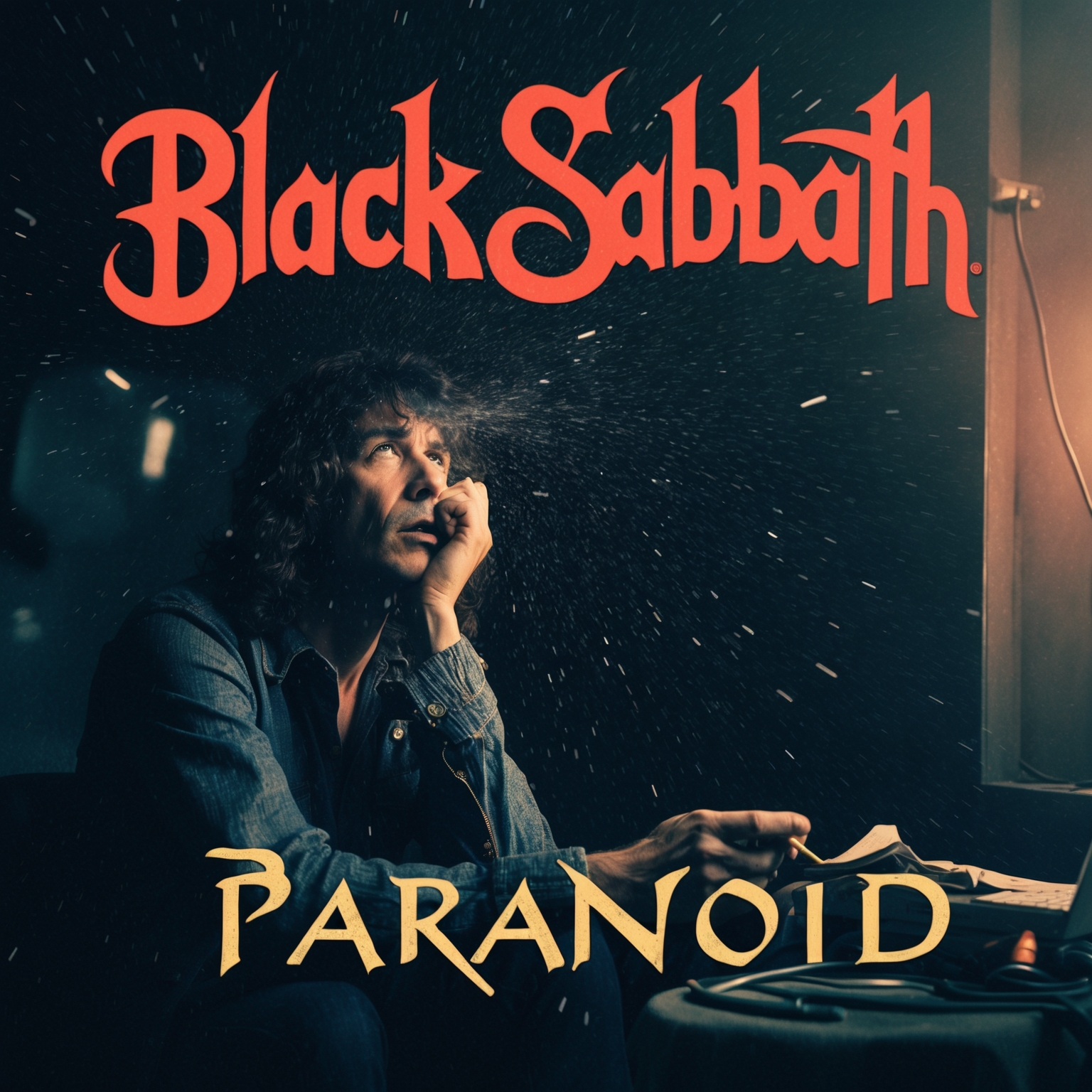 Lyrical Themes and Messages: At its core, ‘Paranoid’ delves into the themes of anxiety and mental turmoil, issues that resonate deeply with many listeners. Released in 1970, a time when society was beginning to grapple with mental health awareness, the song captures the emotional distress of feeling misunderstood and alienated. The protagonist’s confession that people think he’s insane offers a personal glimpse into the struggles of dealing with an unsteady mind.
Lyrical Themes and Messages: At its core, ‘Paranoid’ delves into the themes of anxiety and mental turmoil, issues that resonate deeply with many listeners. Released in 1970, a time when society was beginning to grapple with mental health awareness, the song captures the emotional distress of feeling misunderstood and alienated. The protagonist’s confession that people think he’s insane offers a personal glimpse into the struggles of dealing with an unsteady mind.
Narrative and Storytelling: The narrative unfolds through a first-person perspective, drawing the audience into the protagonist’s turbulent thought process. This choice of narrative style allows the listener to experience the raw, unfiltered emotions of the individual. The use of everyday language, rather than complex narratives, makes the lyrics more relatable and impactful, contributing to the song’s timeless appeal.
Use of Literary Devices: Literary devices play a significant role in enriching the song’s lyrical quality. The repetition of phrases like “I think I’m going to lose my mind” emphasizes the cyclical nature of the protagonist’s thoughts. Metaphors are subtly woven in, painting a vivid picture of mental unrest. Such devices enhance the emotional weight of the lyrics, allowing listeners to connect on a deeper level.
Comparative Analysis with Other Works: When compared to other Black Sabbath songs, ‘Paranoid’ stands out for its intense focus on the individual’s psyche rather than external, larger-than-life themes. While tracks like ‘War Pigs’ critique societal issues, ‘Paranoid’ is inward, introspective, reflecting a different facet of the band’s lyrical repertoire.
Emotional Impact and Relatability: The raw confession of seeking someone to “occupy my brain” strikes a chord with those who have experienced similar feelings of isolation and despair. This emotional authenticity has helped cement ‘Paranoid’ as an anthem for individuals struggling with their mental health, contributing significantly to its enduring success.
🎸 Did you know Paranoid by Black Sabbath was written in just 20 minutes? Talk about a riff lightning strike! ⚡️🤘 #BlackSabbath #Paranoid #HeavyMetalMagic #RockLegends tinyurl.com/mthc696n
Click to Tweet

